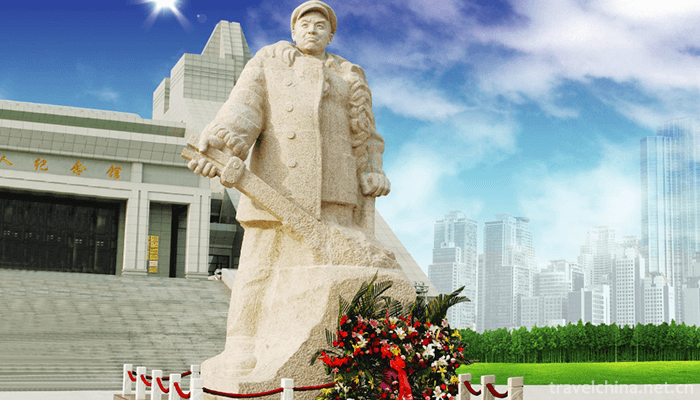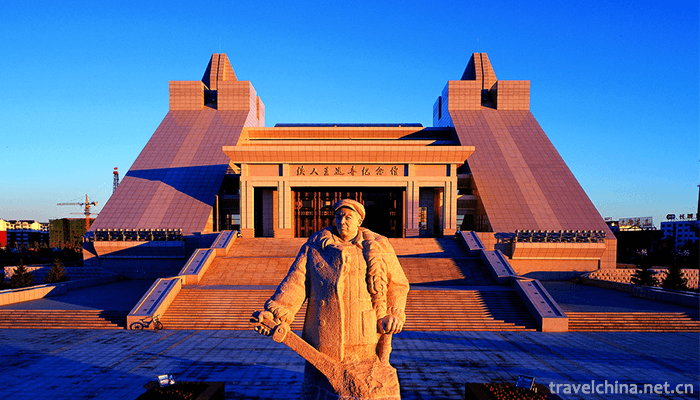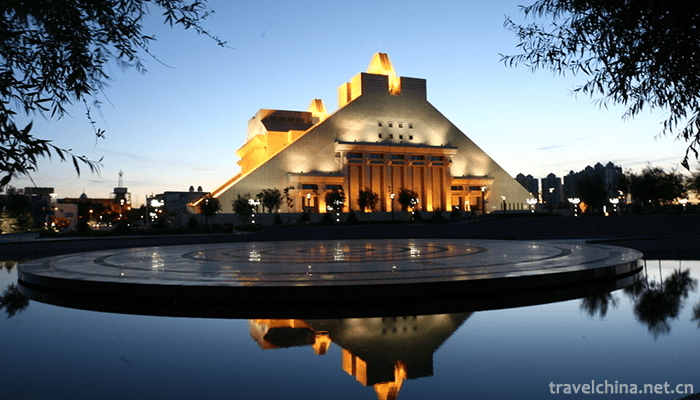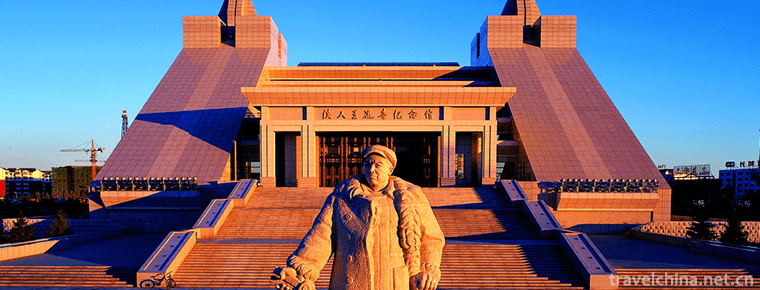Iron Man Wang Jinxi Memorial
Iron Man Wang Jinxi Memorial
The Iron Man Wang Jinxi Memorial Hall was built in 1971 to commemorate the pioneer fighter of the Chinese working class, the Iron Man Wang Jinxi. The Ironman Memorial Hall, originally located at No. 8 Jiefang Second Street, Daqing City, Heilongjiang Province, was newly built on the old site of "Comrade Wang Jinxi's Heroes Showroom" in 1989. The total area of the museum is 54,000 square meters, including 30,000 square meters of green space and 1240 square meters of main building.
In January 2017, the National Development and Reform Commission, the Ministry of Publicity, the Ministry of Finance, the National Tourism Administration and the Central Party History Research Office published the National Red Tourism Classic Scenic Spots List, among which the Iron Man Wang Jinxi Memorial Hall is listed.
Library History
Located at No. 8 Jiefang Second Street, Daqing City, Heilongjiang Province, the Iron Man Wang Jinxi Memorial Hall was newly built on the old site of "Comrade Wang Jinxi Heroes Showroom" in 1989. The total area of the museum is 54,000 square meters. In February 2003, the petroleum and petrochemical enterprises in Daqing area, the Daqing Municipal Committee of the Communist Party of China and the municipal government jointly consulted, with the support of the Heilongjiang Provincial Committee of the Communist Party of China and the provincial government, and with the approval of PetroChina National Petroleum Corporation, decided to relocate the Iron Man Wang Jinxi Memorial Hall.
Yan Yunbo, Vice Dean of Architectural Design Institute of Shenyang Architectural University, presided over the design of the new pavilion, which began in 2004 and was completed in 2006. On August 10, 2006, Premier Wen Jiabao, member of the Standing Committee of the Political Bureau of the CPC Central Committee and Premier of the State Council, inscribed the name of the library in his own hand when he visited Daqing Oilfield. The new museum, which lasted nearly three years, opened on the 47th Anniversary of the discovery of Daqing Oilfield on September 26, 2006.
Traffic information
Traffic information
TieRen Wang Jinxi Memorial Hall Bus Station TieRen Square Station
Address: No. 8 Jiefang Second Street, Jeanhu Road District Bus Route 36, 6, 356, 26 and 113
Tickets free . Opening time Tuesday to Sunday 8:30-16:00




-
1.Bigan Temple
Bigan Temple, located in Weihui, Henan Province, is one of the most important temple-tomb complex. It is the first temple in China with tomb-worshippers, known as "the first temple in the world&a
Time 2019-01-02 -
2.Gudong Waterfall
Gudong Forest Waterfall Group Tourist Area is located at the foot of Butterfly Mountain - Lawn Road, Gudong Village, Dayuan Town, 8 kilometers away from Guilin City, on the other side of Lijiang Forei
Time 2019-01-12 -
3.Shi Bao Village
Shibaozhai, a national AAAA-level tourist attraction, a national key cultural relic protection unit, is one of the 30 best new tourist landscapes in the Three Gorges of the Yangtze River,
Time 2019-02-08 -
4.tea and pastries making skills
Tea making skills, Yangzhou City, Jiangsu Province, local traditional handicraft, one of the national intangible cultural heritage.
Time 2019-04-15 -
5.Porcelain painting
Porcelain plate painting refers to a kind of planar ceramic handicraft which is manually painted and glazed with special chemical pigments on plain porcelain plate and then
Time 2019-04-22 -
6.Gesar
Gesar (Sr) came into being in the second half of the 17th century and spread among the Mongolian people in Mongolia, Liaoning, Jilin, Heilongjiang, Qinghai, Gansu, Xinjiang and other provinces and reg
Time 2019-05-01 -
7.Jinshi seal carving
Epigraphic seal carving is an ancient Chinese traditional arts and crafts, which belongs to an important part of Chinese stone culture. As the birthplace of inscription, Xiling Seal Press has been lis
Time 2019-05-07 -
8.Leizhou song
According to the records in historical books, Leizhou songs were prevalent as early as the Song Dynasty. After the 1990s, people divided Leizhou dialect into different rhymes to express different cont
Time 2019-05-11 -
9.Ma Xian Xing custom
The belief in Ma Xian is a traditional folk custom inherited from generation to generation by the people of Fujian and Zhejiang. Ma Xian, also known as Ma Xiaoxian, is a goddess worshipped in northeas
Time 2019-05-16 -
10.Shouning North Road Drama
Shouning North Road Opera, commonly known as Fujian Random Bomb and Hengshao Opera, came into being after Random Bomb entered Fujian in the mid-Qing Dynasty, such opera troupes as road work, off-road
Time 2019-06-15 -
11.Brown Fan Dance
On the day of the grand Brown fan dance festival, adult men gather in groups on a square with their own delicacies and rice wine every day, and hold a large-scale Brown fan dance activities by arrangi
Time 2019-08-16 -
12.Wawushan National Forest Park
Wawushan National Forest Park is located in Hongya County, Meishan City, west of Sichuan Basin. It is 180 kilometers away from Chengdu and 100 kilometers away from Leshan. As of 1993, the park covers an area of 65869.80 hectares, rich in vegetation resources
Time 2020-10-15